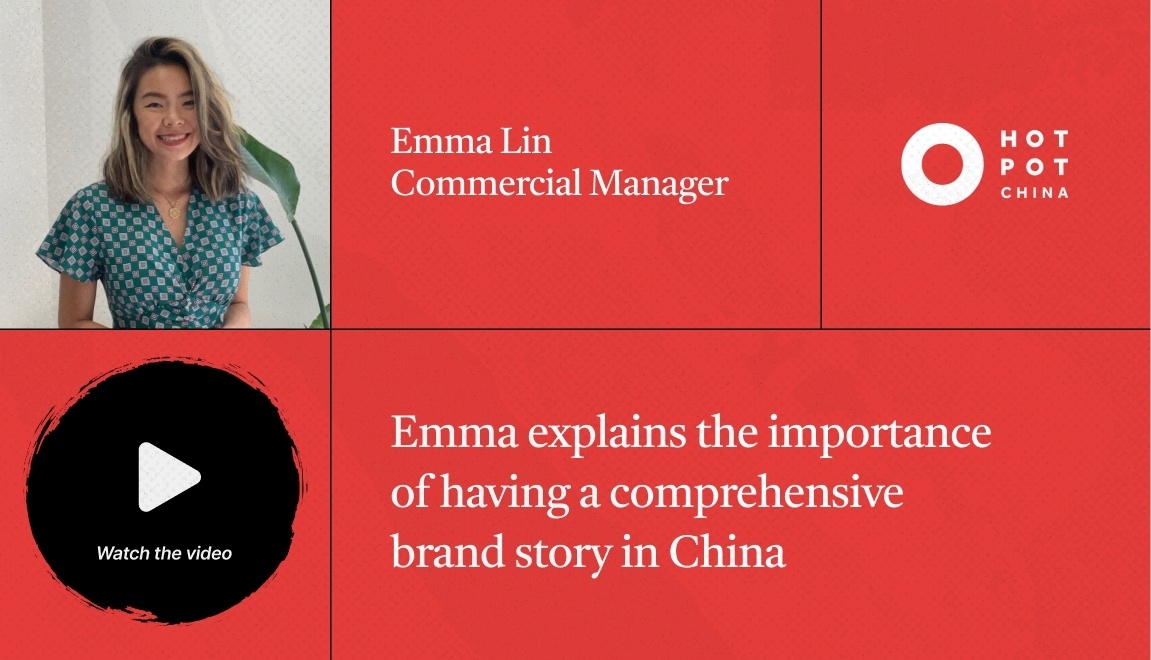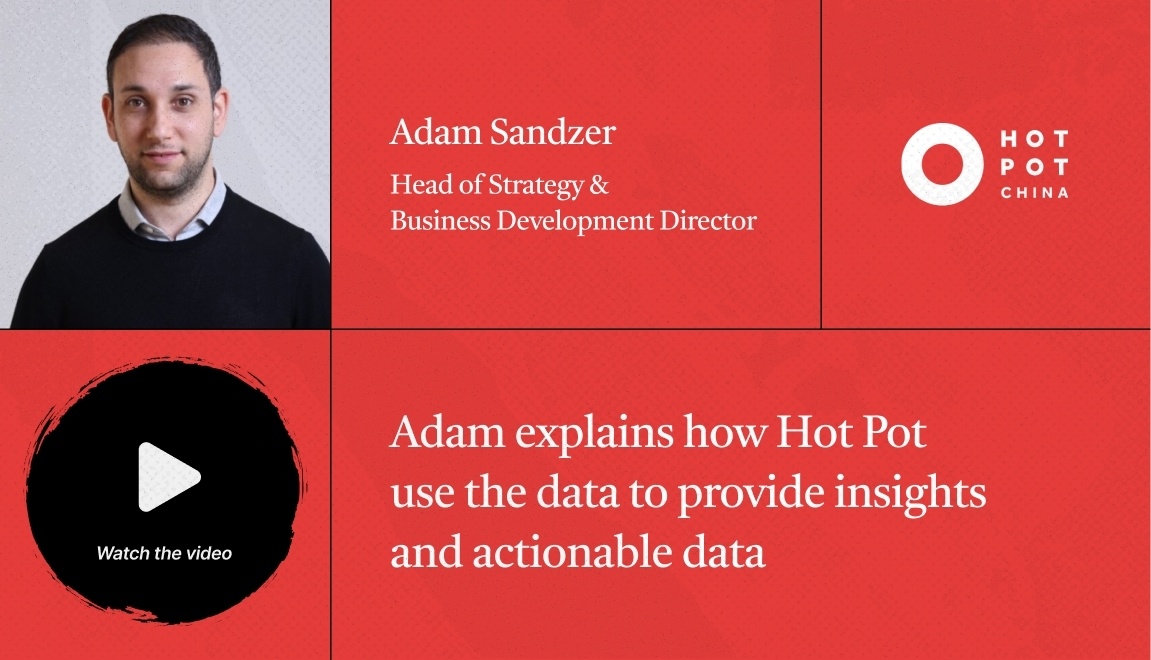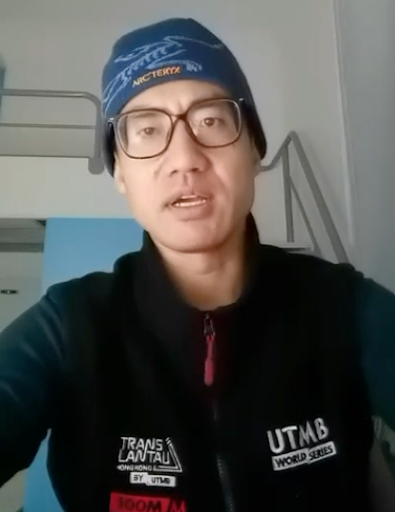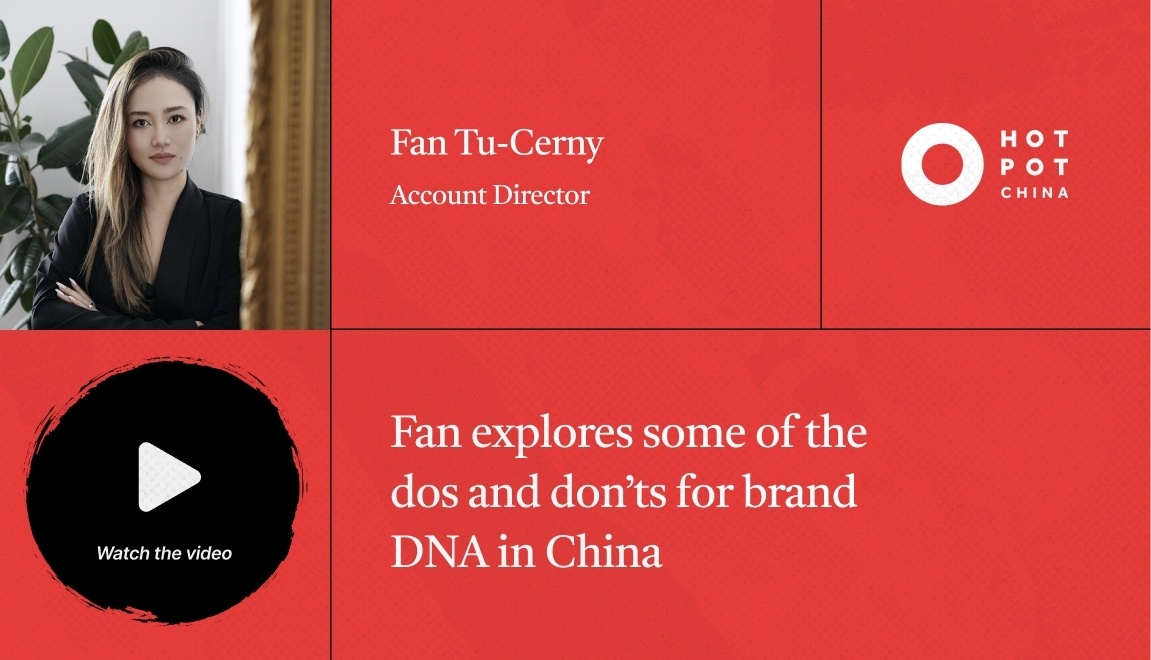Deconstructing success in China:
Building a landscape for premium athleisure wear

Hot Pot China (HPC), a specialist agency focused on driving success in China through brand, digital, eCommerce, and O2O initiatives, has amassed an impressive group of premium brand clients including Rapha, Liberty, Canada Goose, Le Col and many others.
As authors of this report, the Hot Pot team draw on nearly 20 years’ experience taking a hands-on approach to their clients’ journeys and driving commercial and brand success in the world’s most demanding yet rewarding markets. Lace up and join the pack as we deconstruct the key factors that put Hot Pot’s partner brands well ahead of the pace in China.
It’s tough at the top in China.
Especially when it’s over 30 degrees centigrade and the summit you’re trying to reach is the 3000-metre towering summit of Emei Shan 峨眉山 with its relentless elevation changes over a 25km course.
Meeting that kind of challenge doesn’t happen overnight. Every runner needs months of prior preparation, the right mindset, a supporting crew and a fuelling strategy that’s tailored to their own goals.
When fitness, outdoor and athleisure brands look at achieving their own pinnacles in China - growing brand and revenue metrics to meet the booming demand in the market - why then are so many of these same factors overlooked? You cannot run the race alone, you need to adapt your thinking to meet the local terrain and budgets, milestones and expectations all need to be tailored to ensure you’re on the right track.
Running is just one of the many performance sports alive and kicking among the affluent and young in China. Fitness takes centre stage as a badge of prestige, a balanced lifestyle and a signifier of discipline and achievement.
As a result, both sport-specific apparel, as well as wider premium athleisure are seeing staggering year-on-year growth.
In 2023, overall athleisure wear net sales across online platforms Tmall, JD.com and Douyin grew by 12% (v 2022) to approx. $4.8 billion. The growth continued apace in 2024 with 8% growth (v2023) to approx. $5.2 billion.
With such significant growth projected for the foreseeable future, many of the key global players are jostling for a position to win out in China’s sportswear and fitness wear marketing.
However, opportunity and success are not limited to those with deep pockets. Naturally, the likes of Fila, Anta, Lululemon, Adidas, Nike and Underarmour have been in the market for some time, have on-the-ground resources and are able to tailor both product and marketing to meet the aspirations of their target audiences.
But smaller niche sports brands have a major advantage - the Chinese consumer cares deeply about both the performance/price trade-off, as well as the foundation story of the brands they are buying. Nike and Lululemon will always hold “big brand prestige” for the masses but a significant and increasing proportion of athleisure fans want to be wearing a brand that speaks to them as individuals and which has a different story to tell.
Fill in the form to continue

“If you need proof of China’s fitness/outdoor/athleisure boom then look no further than Shanghai’s Pudong Kerry Centre mall.
I dropped by to check out the retail space, knowing that a number of international brands had newly opened up there but I was bowled over by the breadth and depth on display.
Positioned right next to Pudong’s Century Park, where runners and cyclists are constantly in motion, the mall puts sports brands centre stage.
A quick glance at the international line-up says it all: On, HOKA, Brooks Running, Lululemon, Houdini Sportswear, icebreaker — plus some standout domestic Chinese players like RE 而意 and Keep”
Jonathan Travers-Smith - Founder & CEO at Hot Pot China
Here’s where to make a start...
Pre-race prep: Building a strong foundation for market success

Before entering the China market, you need to deconstruct the brand - the name, the story and vision, the logo, the slogan and the messaging. Then you can reconstruct the brand DNA to appeal to Chinese consumers while staying true to your brand.
Here’s our tried and tested formula to propel you to success in China.
Strategies for success - know where you currently stand
As you lace up your trainers, give some thought to where your brand currently stands in China. At this stage, many brands who have done no proactive marketing in the Chinese market are surprised to learn that they already have some traction and visibility.
Brand searches on platforms like Taobao, Tmall and JD.com can reveal where you currently sit among global and local athleisure competitors. Research into this can reveal everything from the size of the market, existing online sentiment and more often than not, surprising levels of existing sales via 代购 daigou (grey market resellers).


Consider these questions:
- What’s the demand for our specific product range on each ecommerce platform?
- Which are the fastest-growing products in the category and why?
- What grey market sales already exist, what does this tell us and what action should we take?
- Does someone else already own your brand narrative in China? Is this damaging to your prospects?
Stage zero of any review of China can be done without a great deal of investment but you need to know where to look and what you’re looking at. By sizing the market with real data, real people and commercial partners, you can gain a much better understanding of the opportunity that China brings to athleisure.
In 2024, the top 10 athleisure brands in China accounted for 61% ($3.2b) of the total athleisure wear net sales across Tmall, JD.com and Douyin.
"People had started running and cycling in big numbers before COVID which came to a head - a pressure cooker - with hundreds of millions of people in China locked up in tiny flats and realising how much they miss fitness and exercise."
Jonathan Travers-Smith - Founder & CEO at Hot Pot China
Sweatpants (23.1%) represented the biggest product category within athleisure wear across Tmall, JD.com and Douyin in 2024, followed closely by sports down jackets (20.9%).
With access to an astonishing array of real trading data from China’s major ecommerce platforms, the Hot Pot team can quickly plug you in and get initial feedback.
To provide perspective, Hot Pot China work with more than 40 in-China sources of real trading data and qualitative research, including real-time sales data from Tmall, JD.com and Douyin, which is then analysed by an expert team to give concrete insights and strategic actions.
Hitting the starting blocks with this info in hand gives customers an unfair advantage when it comes to race day.

Who’s in good form? Check out the competition
You wouldn’t try to win a marathon without knowing who else was in the race, so you should always look to those in career-best form to see what tactics are helping them get ahead.
While Lululemon is now a massive powerhouse of growth in China, it started from humble beginnings and committed to growing meaningful offline and online communities centred around yoga right from the get-go. Leading with now-iconic imagery of hundreds of yoga fans participating in a class in Beijing’s Forbidden City, they had a message to send, a passion to share and a product range that met consumer needs.
Naturally, the specifics here are not to be emulated but the approach, commitment and tailoring of tactics to engage Chinese audiences can provide meaningful inspiration to new entrants.
Likewise, don’t underestimate local Chinese brands in being competitors within the market. In 2024, seven of the top 20 athleisure brands in China were local.
Previously, local brands may have been viewed as copycats of larger international brands; however, they’ve worked hard to build a loyal audience and are typically very nimble in understanding their customers. They focus on rapid new product development (NPD) to meet needs and leverage specific functions of China’s digital ecosystem to build a prominent position.

Going deeper - find and connect to your tribe
As a critical layer to this, Chinese consumers’ worldviews are always adapting and evolving, so understanding the psychographic foundations for their brand choices is key to unlocking success.
Consider some of the following methods and techniques to get you started:
- Don’t settle for a simple mass, quantitative study, as while this gives the comfort of knowing the majority opinion, it misses the critical value of hearing detailed personal motivations with added texture, depth and reasoning that only one-to-one contact with consumers can give
- Craft insight from your specific audience via qualitative interviews with target audience members, helping to build audience profiles for ideal customers and getting unique cues for your impactful localised messaging in China
- Review a range of different social platforms to harvest reactions and responses to your brand and competitor brands. Tools focused on Little Red Book [Xiaohongshu] and Douyin can unearth deep insights in real time
- Get out in the field in the market with an immersion trip, not just to Beijing, Shanghai and Shenzhen, but honing in on specific tier 2 and even tier 3 cities that give a much deeper view into audience preferences and the retail landscape in China

Hot Pot China believes that a true understanding of your audience is a crucial step - so often overlooked - on the path to building a unique and successful strategy.
We recommend bespoke insights projects for each partner brand, typically including a mix of:
- First-hand interviews and always-on focus groups with our bespoke Intel Community
- Tailored social listening on Little Red Book and other platforms
- Sector-specific immersion trips to relevant Chinese cities to see the consumers, competitor brands and retail landscape in action
Audience profiling excerpt

Xiang L
Small Business Owner
40 years old
Male
Beijing
- Member of a Beijing running club with top amateur runners
- Runs 5-6 times a week, averaging 300 km per month
- Systematically trained, with over 100 marathons completed in the past decade
"Different running shoe brands, each with unique advantages, can make a huge difference in our running performance."
Xiang L, small business owner, semi-professional runner

Theo L
Strategic Planner
30 years old
Male
Beijing
- Regular runner who started 1.5 years ago
- Runs daily, covering 1-1.5 km per session
- Inspired by his manager to run as a stress-relief method
- Prefers solo runs near his home
"What motivates me to run is the sense of fulfilment. Running makes me happy, helps me think more clearly and keeps me energetic and effective."
Theo L, strategic planner, regular runner

Daisy W
Project Manager
28 years old
Female
Beijing
- Regular runner since the pandemic
- Runs 2-3 times a week, covering 5 km per session, usually in the evenings
- Enjoys solo runs along the river near her home
"I bought Asics running shoes on an ex-colleague’s recommendation—a veteran runner themself—and was especially drawn to the Asics shop’s gait analysis and running assessment, which helped me choose the most suitable shoes."
Daisy W, project manager, regular runner
So, now you’re equipped with the right intel and have a clear understanding of your target audience, it’s time to stretch out and get ready for the start line.
On your marks: Setting
the stage for execution

The right coaching team by your side: Trade partner (TP) selection
Done well, TPs are your operational backbone in China, managing major aspects of your ecommerce presence, everything from logistics to store design, to performance marketing on platforms like Tmall. However, rushing into a partnership without proper preparation often leads to costly missteps.
Adam Sandzer, head of commercial strategy at Hot Pot China shares his tips for selecting the right partner:
- Be clear about what you want: define the type of TP setup you are looking for in China before starting the process and assess based on relevant and defined criteria
- Bigger isn’t always better: brand, commercial and cultural fit is as important as the TP’s operational capability and ecommerce expertise
- A two-way process: remember, as much as you are assessing the TP’s capabilities, you are being assessed by the TP for market potential, so don’t forget to present the best version of yourself and your brand
"Over the years, I’ve been surprised to see how many brands fall into relationships with TPs without actually drilling down into their exact needs or what the options are out there."
Adam Sandzer, Head of Commercial Strategy
- There is no substitute for being in the market: the final decision should not be made until you have spent time meeting your prospective partner, operational teams and facilities in China
- Never accept the first offer: the initial proposal is often hugely inflated so be prepared to negotiate and give yourself options
- What is the TPs attitude to discounting? There is a lot of pressure from all sides to discount products on entry into China to gain traction, however, those brands that comply with this request typically find it very hard to get back to full price. Make sure you and the partner are aligned on this
"When selecting a TP, look beyond shimmering credentials and shiny client testimonials. The most important thing is to find the right TP match for your unique brand. At Hot Pot we ensure a TPs suitability has been fully assessed, by analysing them across operational capability, platform expertise and brand relevance."
Adam Sandzer, Head of Commercial Strategy
A well-researched process helps secure a partner who aligns with your goals, offers tailored support and maximises market potential; it’s all about having the right experts in your corner for the distance. It is also helpful to come to the negotiating table armed with intel around typical TP fees, structures blending retainer versus commission and a range of other bargaining chips that can help protect margin from day 1 through to maturity in the market.
.png?width=1056&height=560&name=Mask%20group%20(2).png)
Who else is on your team?
Just as elite athletes have a raft of performance coaches, nutritionists, physiotherapists and mindset specialists, your journey in China cannot and should not be dictated by TP selection alone.
TPs are critical for their operational expertise and ability to leverage the myriad functions of the Alibaba or JD ecosystem and they may even be excellent at the technical performance marketing aspects within these platforms. It may even be tempting to hand over the reins of all marketing to your new trusted partner. However, one fact remains true in today’s landscape: TPs typically focus on sales at all costs; they are not brand builders.
To boost sales, TPs may push for heavy spending, especially during shopping festivals and discount campaigns. But this approach can harm your brand image and, more often than not, your China profit and loss (P&L).
A couple of key stats back this up. A full 80% of consumers arrive at Tmall knowing the name of the brand they are interested in and this brand term gets inputted in the search bar. The consumers take this action due to a complex mix of brand marketing OUTSIDE of the marketplace. They do not stumble across your 5-second display ad within Tmall and suddenly develop an insatiable appetite for your apparel. For this reason and at the request of TPs, many brands overweight their performance marketing spend, throwing money at securing clicks from consumers who are not interested in the brand in the first place.
To avoid this major pitfall, your China partnerships must comprise a seasoned team of strategic brand marketers on your side to build a meaningful presence and generate vital engagement and affinity for your brand and your unique story. This cannot be done in isolation in the narrow world of marketplaces alone.
At Hot Pot, in playing this role for partner brands, we strongly advocate for aligning marketing and commercial strategies closely, with open and transparent dialogue between the brand owner, the TP and our team of tactical brand marketers.
Setting a solid blueprint for success at this stage, which is based on concrete, benchmarked and realistic metrics across brand engagement, community growth traffic generation and conversion, is a critical step in aligning all partners. It’s critical that your brand marketing partner understands your commercial goals and conversely that your ecommerce performance partner understands the value of investing in brand growth.
Failing to set this up in advance can turn a competitive race into a race to the bottom.

Out of the blocks: Launching and adapting to market dynamics

Pace yourself for success
Now that we’re up and running, after all the preparation and the excitement of launching, it’s easy to get overly ambitious and expect explosive sales growth overnight. However, it’s prudent to work to realistic expectations as part of early-stage plans. In many cases, the first 2-3 months see slow but increasing sales growth and negative P&Ls as investment is made into brand visibility. For those looking to dominate a sector, sustained commitment to growth can even amount to 1-2 years of net investment while a solid consumer base is established.
In all cases, setting a suitable pace is critical as you test and learn. It takes time to familiarise yourself with the market, get local consumers to interact with your brand and build vital trust. Likewise, the Chinese market is constantly evolving, so strategies that work for an initial launch phase may not be effective six months later. Once you’ve paved the way and learned to pace yourself, the process becomes much smoother.
Track progress with KPIs
To navigate this journey, you need a relevant map in the form of a strategic blueprint and a GPS device that provides real-time direction to avoid missteps and dead ends.
At Hot Pot China, we empower our clients with exclusive access to critical data from leading Chinese ecommerce sites and social media platforms. Through in-depth data analysis and insights spanning both marketing and commercial spheres, we provide a holistic view of clients’ progress. Regular data tracking ensures that brands stay responsive to shifting market conditions and emerging consumer trends. Even more critically, we recommend reducing the many factors that can be tracked to a set of 4-5 core metrics that are monitored and discussed via a bespoke performance dashboard.
Like a runner mentally re-checking their race plan versus their split times, being able to combine the initial blueprint for success with real-time monitoring and benchmarking of the numbers that matter, puts brands in pole position and ensures they’re on track for achieving their personal best.
We took this approach as part of our partnership and market entry with British premium cycling brand Rapha. Having understood the target demographic via consumer insights, we were able to couple this with our data tracking tool, honing in on the exact demographics that were buying related products, as well as the fastest growing category segments, with detailed sales projections to match. Combining these, we laid out a brand growth and ecommerce revenue projection that set the bar for weekly, monthly, quarterly and annual success.
Adapt to local terrain
China is a unique and challenging market for global brands: aside from working in another language and written script, you will need to come to terms with a wildly different cultural background, a self-contained digital landscape with no Western parallels and a complex legal environment that is unlike anything most execs know from global markets.
When it comes to localising appropriately, the only key to success is getting the right advisory and execution team in your corner to navigate the complexity while empowering your own decision-making.
The below areas can only begin to scratch the surface of some of the lumps and bumps brands experience as they take strides through China’s varied terrain.
Linguistic challenges:
The Chinese language is tonal and highly context-dependent. Many brands fail to accurately establish a tone of voice in Chinese that both reflects their true brand personality, as well as offers meaningful engagement with their intended target audience. Too many rely on distributors and trading partners for content marketing, assuming that all is on track while brand value is slowly eroded away. Bicultural marketing partners are a must.
Chinese name creation:
Crafting a Chinese name that phonetically resembles the original while conveying suitable associations can have a meaningful impact. For example, “Under Armour” is known as “安徳玛” (ān dé mǎ), implying safety and excellence. Nike uses “耐克” (nài kè), symbolising endurance and conquest. When you consider that 80% of Under Armour searches on ecommerce are for the Chinese name, then the value of getting this naming process right is in the hundreds of millions of dollars annually.
Typography:
Use fonts that are legible and appealing in the local script.
Cultural nuances: Chinese culture is rich with traditions, values and social norms that significantly influence consumer behaviour. Concepts like “face” (miànzi 面子), collectivism and the importance of harmony play a pivotal role in how products and brands are perceived. If your brand values include ideas such as “camaraderie”, “freedom”, or “exploration,” do you know what these elements look and feel like for a Chinese member of your target audience? How will you ensure this is on point when the local inflexion or visualisation could be wildly different in your home market?
Legal considerations:
Brands localising to China must navigate a complex legal landscape. Adherence to Chinese laws and regulations, including data protection, trademark registration, content restrictions and advertising regulations, is crucial to avoiding potential legal pitfalls. For example, using any superlatives is banned under Chinese advertising laws, so even if you are indeed the biggest, fastest-growing or safest in your sector, you cannot factor these elements into your marketing messaging. How will you avoid missteps here?
Naturally, there is a huge amount more to unpack when it comes to confidently navigating the market and localising an approach. Rather than diving in headfirst and finding out the hard (and costly) way, we recommend partnering with seasoned experts who possess native-level language skills and a deep bi-cultural understanding.
Next, Account Director Fan Tu explores some of the dos and don’ts for brands in China:


Robin Trebbe
Board Advisor, Ex-VP Adidas China
Robin Trebbe, VP at Adidas and Chairman of the EU Chamber’s Sports Sector, emphasises that localised strategies are essential for offline success. He identifies three key factors for thriving in offline retail:
- Due to oversupply, it is now more important than ever to choose the right location, depending on brand positioning, either in a premium mall or based on traffic numbers. In general, the trend is that street stores perform better than malls after COVID.
- Offline stores must meet a demand in the consumer journey that online cannot fulfil, such as service and/or atmosphere/experience. If you just offer products, people will, at best, buy online or, at worst, ignore you.
- Show your brand or product USP. Chinese customers need a reason to buy. There are millions of similar products available to yours, so why selecting you over others needs to be clear.

It's a marathon, not a sprint: The road to success beyond year 1

Yes, in China pace matters, but those that truly succeed in the market know it’s about the distance.
Building brand loyalty and ensuring repeat customers doesn’t happen overnight and it takes consistent effort - showing up time and again consistently and with passion - to build a community. When building out definable and actionable roadmaps for our clients, the timing and shape look very different in each case, however, the phases remain consistent.
First few laps: Establish the brand voice, land in the market and begin to build an engaged community
Up the tempo: Push to be the active brand of choice for your segment’s Chinese consumers, double down on why you are different and fuel properly to get ahead
Home straight: Expand the community, land your full product assortment and look to run targeted NPD initiatives to delight and excite your audiences
Go again: In China, it’s always race day and there’s always a new finish line. Having achieved your first set of milestones you need to re-train, build on your learnings and ensure you are able to stay ahead of the competition. Those who get complacent lose peak fitness and rapidly get absorbed back into the pack
Hot Pot China: On your team
Hot Pot China has run the course with scores of brands either entering the market or looking to overhaul their approach to deliver better levels of sales, margin, engagement and innovation.
Specifically, we work across the following disciplines to give our partner brands an unfair advantage:
- Consumer insight: via Hot Pot’s proprietary Cultural Intel Community
- China Blueprint: strategic planning and roadmap for brand and commercial success
- TP and distributor selection process: sourcing, negotiating, and managing to deliver retail excellence
- China social media: content and asset creation, copywriting, channel and community management on Little Red Book, WeChat and other targeted channels
- Creative and campaign execution: localised campaign planning and execution by bicultural teams
Having supported brands of all shapes and sizes to go the distance - from Canada Goose to Rapha - we have a team of seasoned China experts with brand-side experience to help you train, race, win and repeat in one of the world’s most challenging yet rewarding stages. Get ready for a podium finish!


.png?width=904&height=702&name=chart%20(3).png)
